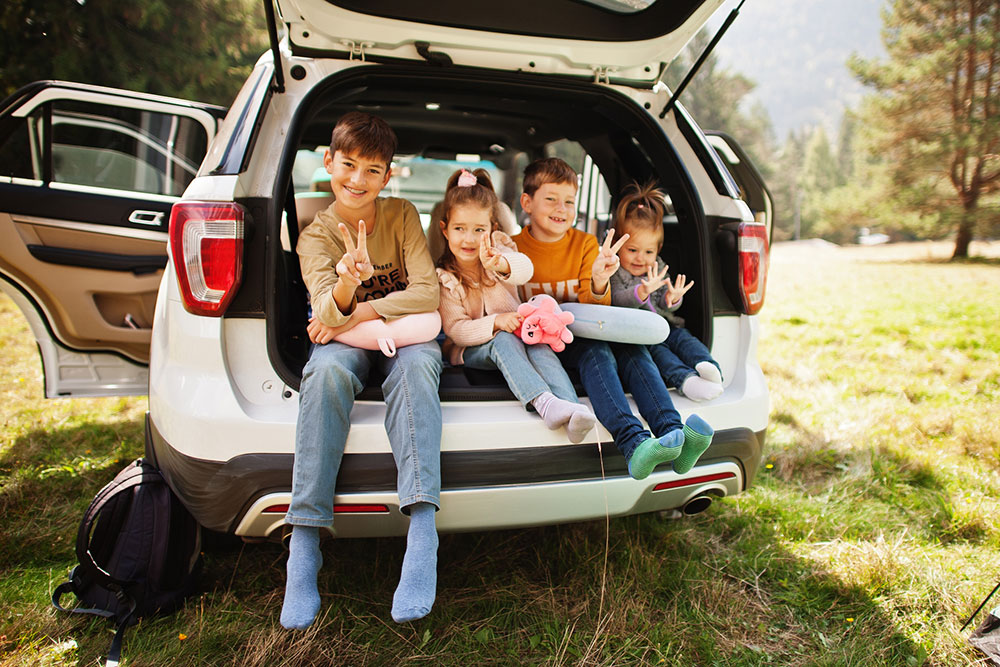What family car is best for you?
Safety and functionality need to be considered when choosing a family car.

There’s no doubt life is never the same once you start a family and it almost inevitably means re-thinking priorities, including in the finance and transport departments.
So, what things should you be considering when you come to selecting a new family car?
Safety should be top of mind for any vehicle purchase but will assume heightened importance once there are more vulnerable and precious family members to protect. So, buy the safest car your budget allows.
Look for cars that are well specified with crash prevention features – the minimum should be autonomous emergency braking, anti-lock brakes, stability control and brake assist, with the widest array of advanced driver assistance features (e.g., blind-spot monitoring, rear cross traffic alert, speed sign recognition) highly desirable.
A full suite of airbags to protect all occupants should also be on the check list. This includes airbags for the third-row seats if it’s a seven-seater.
For used cars look for their Used Car Safety Rating.
These star ratings are based on analysis of real-world crash outcomes. Look for five-star rating and a ‘safer pick’ marker.
For newer cars check their ANCAP score, looking for a five-star car with the latest date stamp possible. ANCAP assess how the car performs in laboratory crash tests as well as the standard safety features fitted.
Personal needs and preferences will play a part in determining the size, style, and practical aspects of a suitable vehicle too.
Consider current and future needs including how many children you have or might be considering. In time you may also need to transport family friends or extended family.
You may wish to purchase something bigger at the outset. That said, if a smaller vehicle will do the job, then it will usually be cheaper to run than a larger one.
Ease of entry and exit is important particularly when fitting child restraints, so check door opening width and angles for suitable access.
Seating that is too high or too low can also make restraint fitting or getting kids in and out awkward.
Consider cargo area size to ensure it’s suitable for carrying family ‘essentials’ that might include prams etc.
Many seven-seaters won’t have a lot of space left when the third row is in use.
A ‘smart’ power operated tailgate can make access to the load area easier when your hands are full. Check the height of the cargo area load lip to ensure it’s an easy workable height for you.
Look to ensure the vehicle has a sufficient child restraint anchor points for your requirements fitted – some vehicles won’t have an anchor point for every rear seating position.
If you need to fit multiple child restraints or a rear facing restraint, we suggest you take your restraints to the dealer and physically try them to ensure they fit, or better still arrange to have the vehicle brought to you so you can check.
Many smaller vehicles won’t fit three restraints across the back seat.
You won’t find a vehicle without blind spots, but some are worse than others.
Windscreen pillars, large mirrors and the rear body design all produce blind spots.
This is an issue on the road and for driveway safety, with one child per week on average runover in a driveway.
Vehicles with good rear-view mirror field of view and valuable technology such as reversing and multi-view cameras can assist with preventing such incidents.
Related topics
Things to note
The information in this article has been prepared for general information purposes only and is not intended as legal advice or specific advice to any particular person. Any advice contained in the document is general advice, not intended as legal advice or professional advice and does not take into account any person’s particular circumstances. Before acting on anything based on this advice you should consider its appropriateness to you, having regard to your objectives and needs.
Insurance Products (excluding Travel Insurance) are issued by RACQ Insurance Limited ABN 50 009 704 152 (RACQI) and arranged by its agent, RACQ Distribution Services Pty Ltd (RDS) ABN 35 116 361 650, AFSL 567130 and RDS' authorised representatives (including RACQ Operations Pty Ltd ABN 80 009 663 414, AR No. 234978 (RACQO). Conditions, limits and exclusions apply. RDS and RACQO are in the RACQ group of companies. One of the companies in the RACQ group of companies has a minority shareholding in RACQI.
RDS and RACQO have not taken your personal objectives, circumstances or needs into account when preparing advice regarding insurance products and you will need to consider whether the advice is appropriate for you. Read the Product Disclosure Statement (PDS) and any applicable Supplementary PDS before making a purchase decision on this product. You can also access our Target Market Determinations on this website. RDS receives a commission from RACQI for the policies it arranges. RACQO receives fees paid for services it provides to RDS. Further details about remuneration are available on request prior to purchasing.
Banking and loan products issued by Members Banking Group Limited ABN 83 087 651 054 AFSL/Australian credit licence 241195 trading as RACQ Bank. Terms, conditions, fees, charges and lending policies apply. This is general advice only and may not be right for you. This information does not take your personal objectives, circumstances or needs into account. Read the disclosure documents for your selected product or service, including the Financial Services Guide and the Terms and Conditions, and consider if appropriate for you before deciding.
Except for RACQ Bank, any RACQ entity referred to on this page is not an authorised deposit-taking institution for the purposes of the Banking Act 1959 (Cth). That entity’s obligations do not represent deposits or other liabilities of RACQ Bank. RACQ Bank does not guarantee or otherwise provide assurance in respect of the obligations of that entity, unless noted otherwise.
RACQ Bank subscribes to the Customer Owned Banking Code of Practice which establishes higher standards than the law requires. The Code reflects modern consumer expectations and developments in approaches to issues such as consumer vulnerability, guarantors, and supporting customers through financial hardship. Please read our Customer Owned Banking Code of Practice page for more information.
RACQ Operations Pty Ltd (ABN 80 009 663 414 AR 000234978) and Members Travel Group Pty Ltd (ABN 45 144 538 803 AR 000432492) are acting as an Authorised Representative of the issuer of the insurance, Tokio Marine & Nichido Fire Insurance Co., Ltd. (ABN 80 000 438 291 AFSL 246 548). Any advice set out above is general in nature only, and does not take into account your objectives, financial situation or needs. Before purchasing any travel products, please consider the RACQ Travel Insurance Product Disclosure Statement (PDS) and the Target Market Determinations (TMDs) that apply to these products. Whilst the PDS outlines the Terms and Conditions of these products, the TMDs outline the intended class of customers that comprise the target market for these travel products. This will allow you to consider which products best suit your objectives, financial situation and needs and consider the products appropriateness to your personal circumstances. TMDs also outline matters involving the distribution and the review of these products. The PDS, Supplementary PDS and TMDs for each travel product can be found here.
